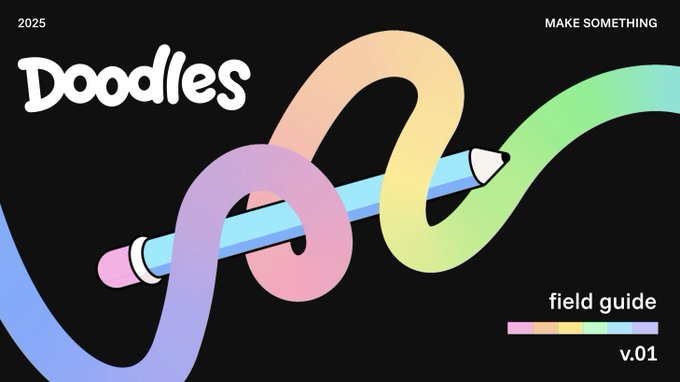Doodles Launches Native DOOD Token on Solana: How NFT Projects Are Transforming
In recent years, NFT projects have increasingly adopted tokenization to expand their ecosystems. Leading Ethereum-based NFT collection Doodles recently announced the launch of its native token $DOOD, choosing to issue it on the Solana chain and initiating a large-scale community airdrop. This move reflects the shift of NFT projects toward financialization tools and reveals the competitive landscape of blockchain technology in asset issuance. The analysis below will explore the background, rules, and industry impact.

Why Doodles Chose to Issue a Token
Since its inception in 2021, Doodles has become a top-six blue-chip NFT project on Ethereum, thanks to collaborations with major IPs (such as a co-branding with McDonald’s) and cross-media operations (animations and music content). However, as non-standard assets, NFTs have always faced liquidity challenges. In February 2025, Doodles followed in the footsteps of projects like Pudgy Penguins and Azuki, announcing the issuance of the $DOOD token to expand its ecosystem and use it as a core economic medium for future IP commercialization (such as games and merchandise).
Notably, Doodles opted not to launch on Ethereum mainnet but instead chose Solana. This decision is directly related to Solana’s low gas fees and high throughput, as well as its strong airdrop culture, which helps attract new users. Doodles also revealed plans to bridge to Coinbase-incubated Base chain in the future, hinting at a multi-chain strategy.
DOOD Token Allocation Rules and Airdrop Details
According to the official release, $DOOD has a total supply of 10 billion tokens, of which 68% will be allocated to the community. This includes 30% for Doodles NFT holders, 25% for the ecosystem fund, and 13% for the “NewBlood” community composed of active Solana users. Of the remaining tokens, 17% will be held by the team (with vesting mechanisms), 10% will go to the liquidity pool, and 5% to company reserves.
The airdrop consists of two categories:
-
Doodles NFT holders must pre-register on a designated page and claim their tokens within 77 days after the Token Generation Event (TGE);
-
“NewBlood” community users (e.g., BonkBot high-frequency traders, Solana Mobile preorder users) will receive the airdrop automatically without registration.
Currently, Doodles NFT holders can verify their eligibility using the validation tool, while Solana chain users can follow airdrop trackers for the latest updates.
Market Reaction and Potential Controversies
Following the announcement, the Doodles NFT floor price surged 54% within 24 hours, and trading volume spiked 345%. Solana ecosystem apps like Phantom Wallet also expressed support, further boosting market enthusiasm. However, controversies have also arisen:
-
Valuation Risk: If DOOD reaches a fully diluted valuation (FDV) of $2 billion, a single NFT holder’s airdrop could exceed $60,000. However, historical performance of similar projects like PENGU (down 84%) indicates high volatility risk;
-
Transparency in Allocation: With 47% of the tokens controlled by the team and company, the community has raised concerns over centralization;
-
Cross-Chain Technical Risks: The planned bridge to Base chain may face smart contract vulnerabilities or regulatory scrutiny.
The Future of NFT Projects: Tokenization and Interchain Competition
Doodles’ transformation highlights two major trends in the NFT industry:
-
Liquidity Solutions: Tokens grant NFTs standardized financial properties, lowering trading barriers;
-
IP Commercialization Pathways: Tokens act as economic links connecting games, animation, and other content, driving IP monetization.
On the other hand, Solana is becoming the preferred chain for NFT token issuance due to its low cost and high efficiency, directly challenging Ethereum’s ecosystem advantage. Coinbase’s Base chain may also play a key role in future interchain competition.
For ordinary users, participating in such airdrops requires attention to security guidelines on platforms like JuCoin, and a rational assessment of token value and risks. As more NFT projects explore tokenization, the market is poised for a new wave of innovation and challenges.





